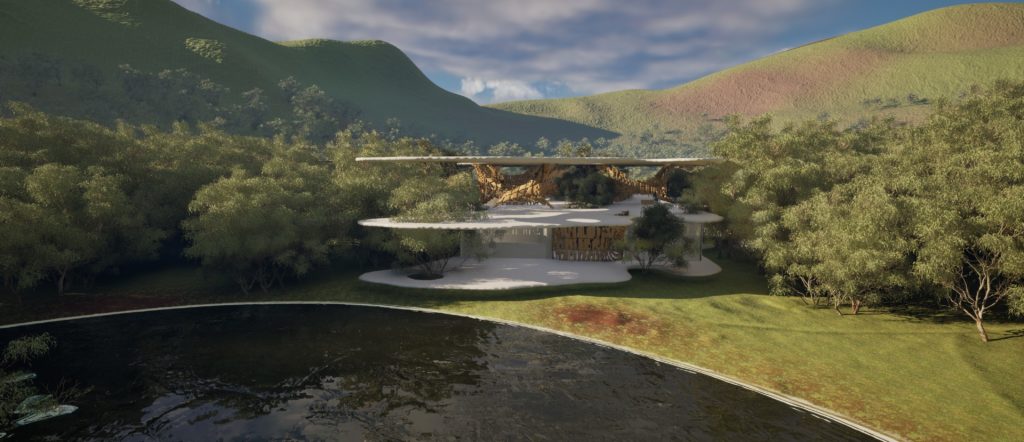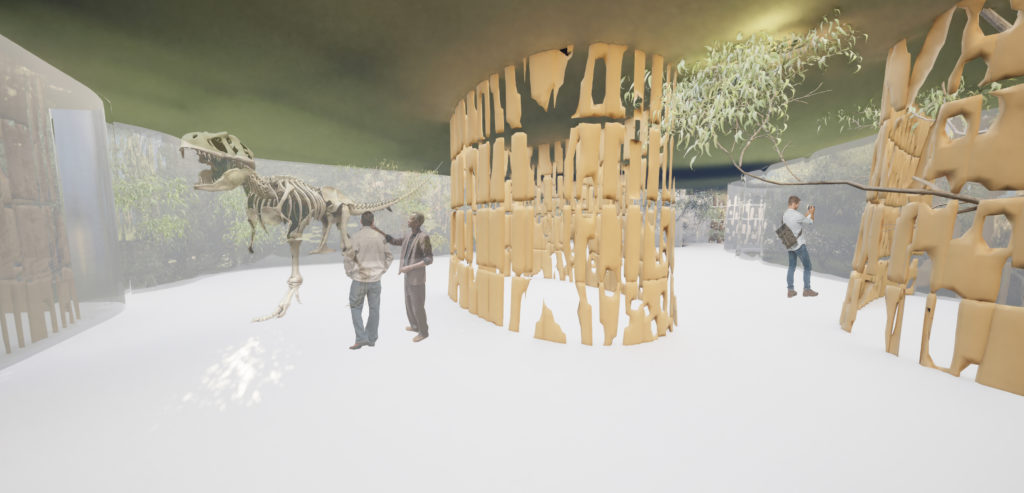DESIGN CONCEPT AND FORM EXPLORATION :
The main idea of the museum is generated from the concept of “Museum in Garden and Garden in Museum” to create a coherent and inseparable experience that mixes the experiences of the conventional museum and the surrounding forest into a series of remarkable spaces. The location with the potential program of Wild Life Extinction Museum makes it more authentic and engaging. This opens up a space where a stroll in the museum invites you into a natural journey and, vice versa.
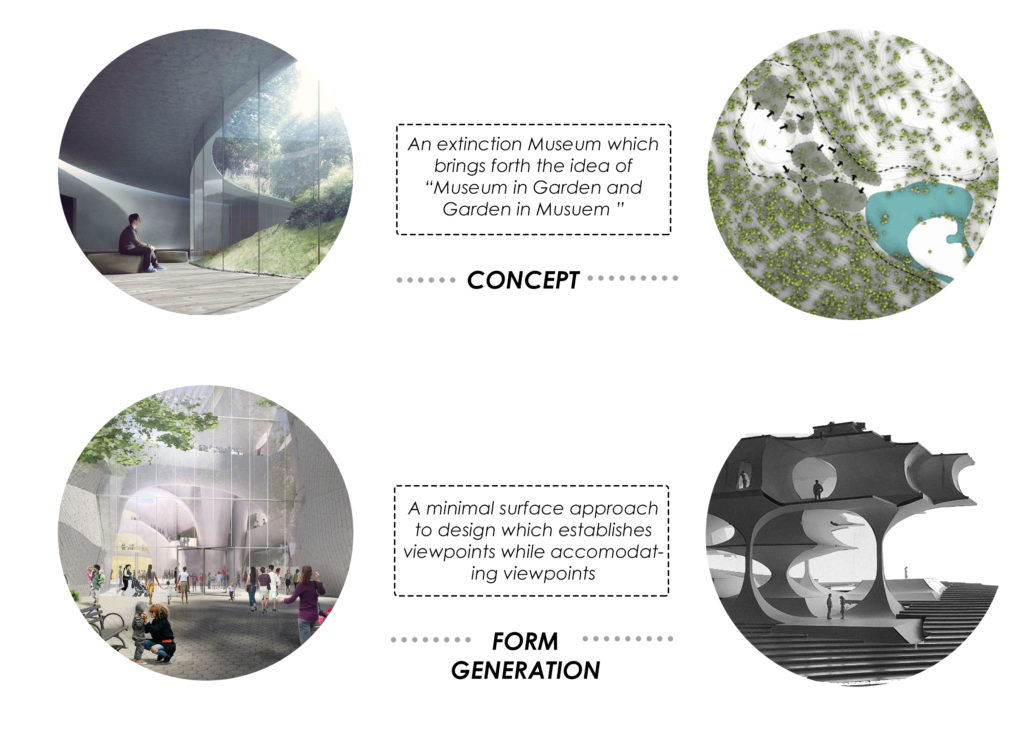
In a much more simpler sense, this is achieved by first creating a massing. This massing volume is modified as per the existing trees to achieve a form that responds to the physical context. Then the view or vantage points as per program and context are established to open up the massing which is then evolved into an organic form using mesh relaxation.
INITIAL APPROACHES:
Voronoi 3d was used as an initial approach to achieve this geometry. This failed in generating surfaces using Mesh relaxation. The ability to achieve control over different volumes based on the program was hindered through this approach. The second approach involved generating a point cloud based on existing tree clusters and then using the cellular automata approach to apply the minimal surface throughout. The possibility to manipulate volumes was a concern here too.
COMPUTATIONAL DESIGN WORKFLOW :
The design workflow which was adapted finally looked at establishing a constructible area by using isovist, generating a base mesh, and creating volume offsets. The whole mesh generated based on program requirements while maintaining the height constraints was then mesh relaxed using Kangaroo to achieve a minimal organic form. Dendro was then used to thicken the mesh as well as to create variation in paneling.
FORM FINDING PROCESS AND ITERATIONS :
The iterations for form finding were experimented with using three different parameters. In a computational sense, the site itself could be considered as a parameter where it can be moved around to get the varying base mesh. Secondly, variation in the grid lets us have control over how organic the base mesh shape can be achieved. The third parameter looked more into the programmatic aspect and on how the volume offsets can be varied.
LAYOUT OF THE MUSEUM :
The layout of the museum is designed in a way that each of the spaces get maximum view for the users while allowing the organic free flow in terms of circulation.
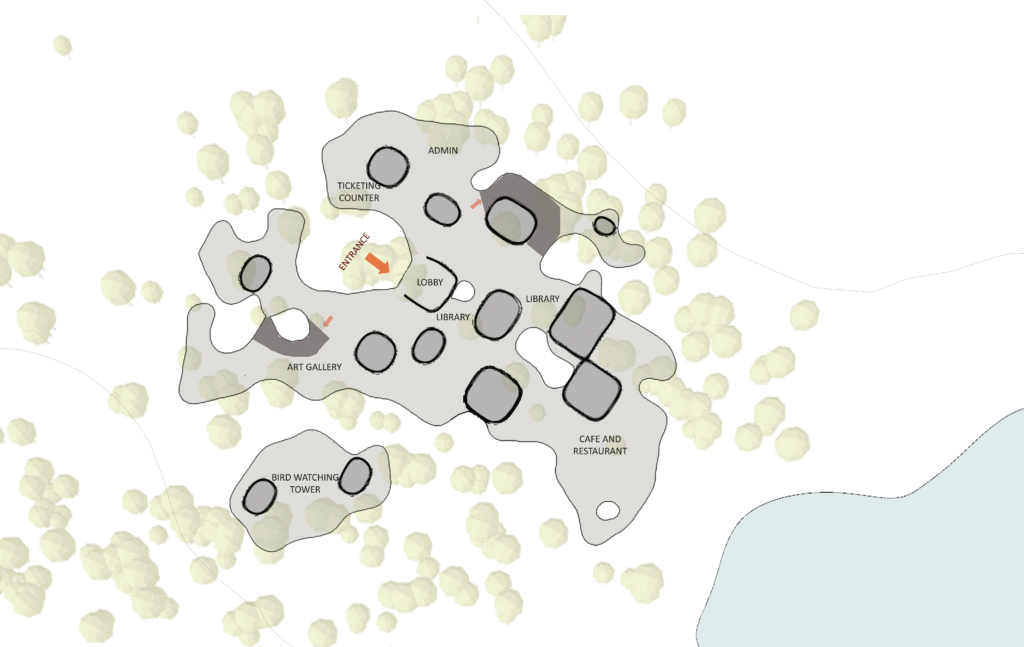
SECTIONAL EXPLORATIONS :
The same idea is being explored sectionally incorporating double-height volumes as well as tree courts which enhance the idea of creating view points.
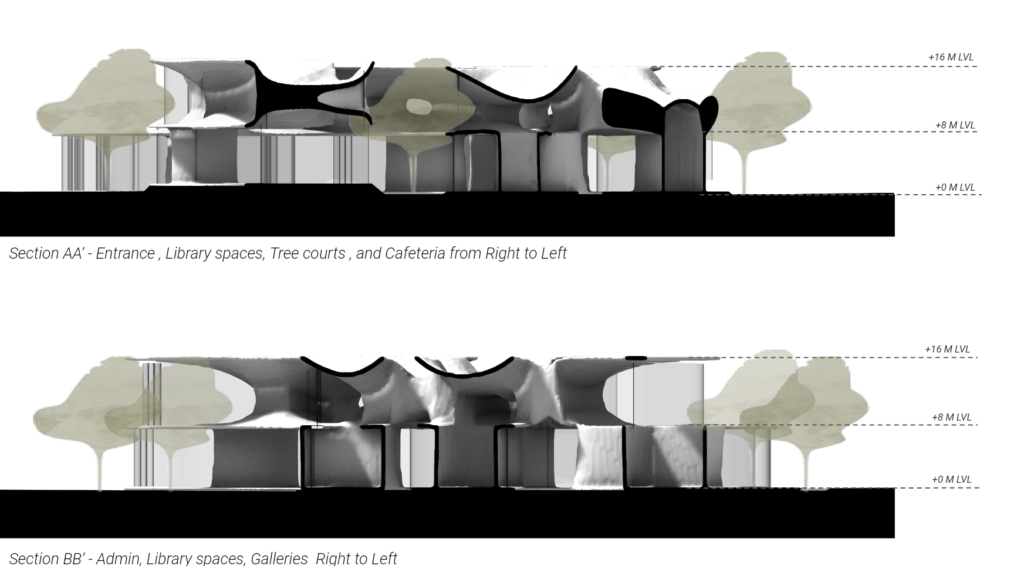
VIEWS:
The aerial view shows how the project sits concerning the tree clusters in the site as well as with the lake. This further adds to our idea of “Museum in the Garden and Garden in the Museum “
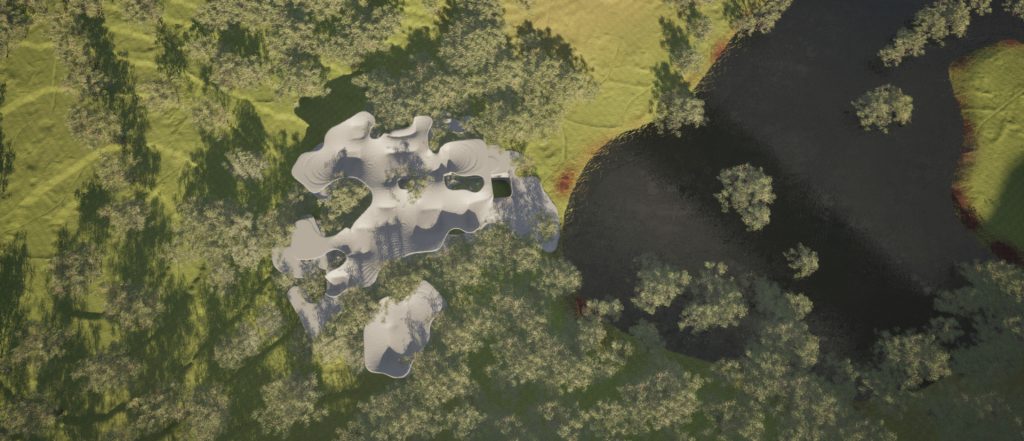
The same is explored in terms of panelling variations. This allows for some transparency in the otherwise solid form which also results in a more dynamic nature of the spaces.The idea of transparency, view points is better shown through the interior view which integrates the nature into the musuem seamlessly.
